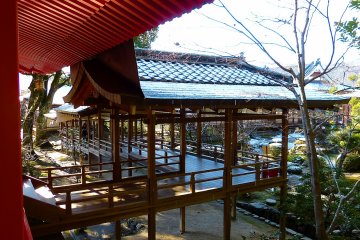
Kyoto Daikaku-ji Temple
Tomoko KamishimaDaikaku-ji Temple, located in the northwest suburbs of Kyoto, contains the same design elements of the ancient Imperial Palace.

Daikaku-ji is a Shingon Buddhist temple in Ukyō-ku, a western ward in the city of Kyoto, Japan. The site was originally a residence of Emperor Saga, and later various emperor conducted their cloistered rule from here. The Saga Go-ryū school of ikebana has its headquarters in the temple. [Wikipedia]

Daikaku-ji Temple, located in the northwest suburbs of Kyoto, contains the same design elements of the ancient Imperial Palace.
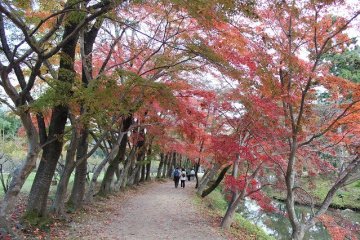
It is said there are three kinds of autumn leaves. Leaves change in appearance during their first color change, the peak, and the withering process. While spring brings with it the ''cherry blossom blizzards,'' rich yellows and deep reds falling around Osawa Pond also produce a magnificent site.

Daikakuji is a temple founded by Emperor Saga. Located in Sagano in the Sakyo ward of Kyoto City.

I didn't know what to expect when I visited Daikaku-ji Temple. It truly amazed me

This man-made pond was built originally for a villa for the Saga Emperor, sometime in the 8th century. It still exists today as part of Daikaku-ji, a temple I really love.

Osawa-no-ike Pond is part of the gardens for the Daikaku-ji Temple in Kyoto. It's a beautiful area to stroll around in the peace and quiet, whilst meeting local residents along the way.

Osawa-no-ike Pond, built in the 8th Century, is the oldest man-made pond in Japan. It is attached to the Saga Emperor’s Villa (Today’s Daikaku-ji Temple). I had a pleasant walk around this peaceful pond on a sunny winter day. Blue sky reflected on the water's surface, where the ice had just melted. The chilly air touching my cheeks was gentle and fresh. Strolling along the path, there was a wide-open field, plum tree grove, and bamboo grove on the north side of the pond.
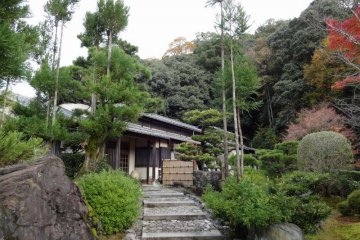
A hidden gem, Ryokan Yamazaki is worth the 30 minute bus ride from central Kyoto. Tranquil surroundings, hearty food and family treatment will start & end your day right.
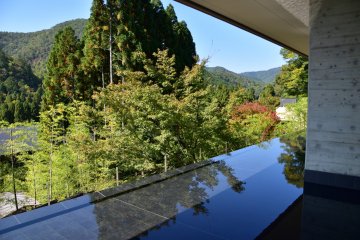
Tokyu Harvest Club Kyoto Takagamine & Viala is a gorgeous hotel inside the historical Shozan Resort Kyoto.

Close to Nijo Castle in Japan's most historic city, this stylish, modern hotel is comfortable, well located and supremely affordable.

This new restaurant is easily accessible by foot from Arashiyama Bamboo Forest, Arashiyama Station, and Saga-Arashiyama Station, making it an ideal spot to try authentic Japanese gyukatsu. Elevate your already unforgettable trip with an equally memorable meal.
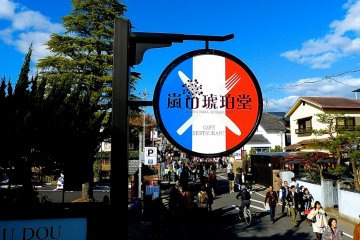
Kohaku-do is a casual French restaurant in Kyoto, Arashiyama. It is situated just a few minutes from Tenryu-ji Temple. And other train stations such as JR Saga-Arashiyama, Arashiyama Station on the Keifuku Dentetsu Line and Hankyu Line are all within a few minutes walk. The price range for the lunch sets is 2000-3000 yen, including hors d’oeuvre, soup, bread, a main dish, desert and a drink-bar. We ordered grilled whitefish and a hamburg steak. Both of the main dishes were quite good!
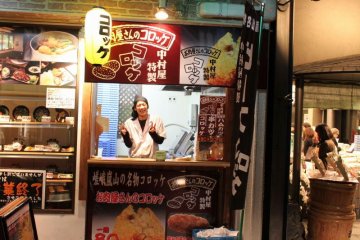
Foods Choices in Arashiyama. Serene eating encounters with eel or energy of the masses
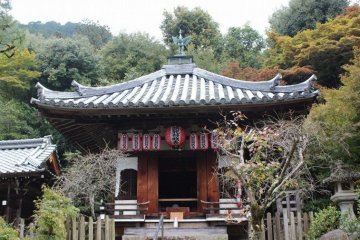
Nison-in is a Tendai Buddhist temple complex in Ukyō-ku, a western ward in the city of Kyoto, Japan. The temple's official name is Ogura-yama Nison-kyō-in Keidai-ji. The temple is a popular destination during the Japanese maple viewing season. [Wikipedia]

Adashino Nenbutsu-ji is a Buddhist temple in Ukyo-ku, Kyoto, Japan. In 811 Kūkai is said to have founded a temple, then Honen altered it to the present Nenbutsuji. [Wikipedia]
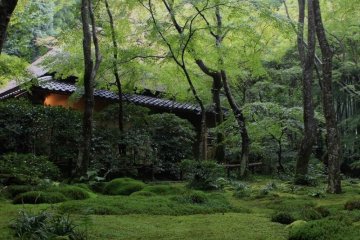
Gioji Temple (祇王寺) is a secluded Buddhist temple known for its picturesque moss garden.